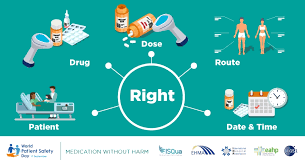Hospital Safety Tips How We Keep You Safe Every Step of the Way
As a case in our hospitals, your weal is of utmost significance. The complexity of the terrain with the case in it requires the veritably stylish in care, yet it’s pivotal that, at each stage of health care, safety is taken seriously. From admission to discharge, a wide range of safety protocols and procedures are in place to cover cases. In this blog, we’ll walk you through how hospitals keep cases safe every step of the way and give some essential safety tips to keep in mind.
1. Pre-Admission and Admission Safety
The safety trip does not start from the time of stepping into the sanitarium, however. In fact, a lot is done long before admission by medical staff with their wireworks- whether it’s in terms of routine scan or an exigency visit. When it’s an optional procedure, the preoperative evaluation generally involves reviewing medical history, medicines, disinclinations, and once surgeries. The point is that your care will be personalized to reduce the threat of complications.
Upon appearance, the sanitarium staff will check your ID several times to insure that they’re dealing with the applicable case for the right operation. This is done either through wristbands, asking your name and birth date, or simply checking your medical records.
2. Hand Hygiene and Infection Control
One of the most critical safety protocols in hospitals is infection control. Proper hand hygiene is essential in precluding the spread of dangerous bacteria and contagions. Sanitarium staff — including croakers
, nursers, and other caregivers are trained to wash their hands regularly and use hand sanitizers to reduce the threat of infection. You, too, can contribute by reminding your healthcare provider to wash their hands before any procedure or contact.
Hospitals also apply rigorous cleaning protocols on every aspect, from patient apartments, operation theaters, to the different medical outfit. further than this, the protocol extends to those areas similar as ferocious care units( ICUs) and exigency apartments( ERs), where infection could conceivably do.
3. Medication Safety
The correct drug in the right lozenge at the right time is a foundation of sanitarium safety. Hospitals follow strict procedures to avoid drug crimes. This includes checking patient records, vindicating disinclinations, and double- checking drug boluses. When you’re specified a new drug, always ask the healthcare provider what the drug is for and if there are any implicit side goods. noway vacillate to interrogate about the drug.
Hospitals also employ electronic health records and barcode systems in the administration of specifics to record them and insure that these are given to the applicable case. This technology limits the circumstance of crimes.
4. ** Case Monitoring
nonstop monitoring is a veritably pivotal part of the safety of the hospitals, especially for those who are being operated on or have critical conditions. ultramodern monitoring systems in hospitals continuously cover cases’ vital signs, including heart rate, blood pressure, temperature, and oxygen situations. similar observers incontinently alert healthcare professionals if any of these values change abnormally, and they respond consequently to avoid complications.
Anesthesia safety is, thus, a precedence issue during surgeries. The anesthesiologists cover the case’s vital signs throughout the entire procedure to insure that they stay stable. ultramodern surgical outfit is designed with safety features to help minimize the threat of crimes.
5. Fall Prevention and Mobility backing
